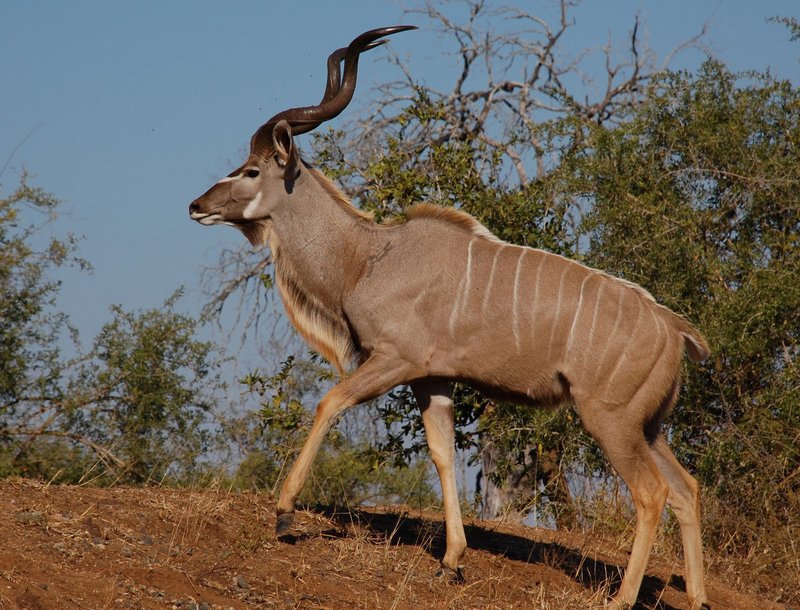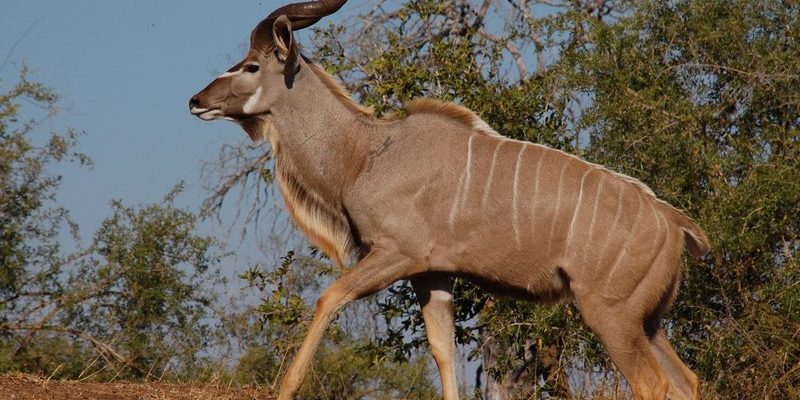
In the wild, the kudu isn’t just another animal; it’s an essential player that helps maintain the health of its surroundings. They’re like the unsung heroes of their habitat, fostering growth in the plants they graze on while also being key prey for larger predators. Let’s dive deeper into the various aspects of the kudu’s role in its ecosystem, exploring how it interacts with other species and contributes to the overall balance of its environment.
Understanding the Kudu’s Natural Habitat
Kudus primarily roam the woodlands and savannahs of Eastern and Southern Africa. They thrive in environments laden with bushes and trees, where they can forage for leaves, shoots, and grass. These animals are particularly fond of areas that offer plenty of cover, allowing them to hide from predators like lions and leopards.
Here’s the thing: kudus are browsers, meaning they prefer to eat higher vegetation rather than grazing on the ground. This habit helps shape their ecosystem by preventing overgrowth of certain plants. By munching on leaves and shoots, they not only sustain themselves but also encourage new growth, contributing to a cycle of health and regeneration for the landscape.
The Kudu as a Prey Species
Kudus are important players in the predator-prey dynamic of their ecosystem. They serve as a crucial food source for large carnivores, including lions, hyenas, and leopards. Their size and agility make them a desirable target, and their presence supports the entire food chain.
When a kudu is part of the food web, it helps maintain a balance. If kudu populations were to decline, it could lead to overpopulation of the plants they eat, affecting the biodiversity of the area. This interdependence is a vital aspect of any healthy ecosystem.
Impact on Vegetation and Biodiversity
The relationship between kudus and vegetation is fascinating. By browsing on certain plants, kudus help keep the plant community diverse. Over time, if kudus weren’t around, more aggressive species might take over, crowding out the less dominant but essential plants.
To illustrate, consider the acacia tree. Kudus love nibbling on its leaves and young shoots. Without these browsers, acacias might proliferate unchecked, leading to less variety in the ecosystem. This balance is crucial because biodiversity supports a more resilient ecosystem, one better able to withstand changes and stressors.
Kudus and Seed Dispersal
Kudus play an indirect but significant role in promoting plant growth through seed dispersal. When they consume fruits, they often pass the seeds through their digestive systems, depositing them in different locations. This natural process helps plant species spread beyond their original spots, contributing to genetic diversity.
You might wonder how this works: when a kudu eats a fruit, the seeds can survive their journey through the animal’s gut. Once out the other end, the seeds are often in a nutrient-rich package, helping them germinate successfully. This ensures that the landscape remains vibrant and diverse, which is essential for ecosystem health.
Kudus and Their Role in Water Management
In regions where water can be scarce, kudus significantly impact local hydrology. By feeding on and trampling vegetation, they help manage water flow through the land. The way they interact with their environment can influence how rainwater is absorbed and retained in the soil.
Think about it: by keeping certain areas open and less dense with plant life, kudus facilitate better drainage and water runoff management. This effect can help maintain local water sources and promote healthier environments for other species, including plants and smaller animals.
The Cultural and Economic Importance of Kudus
Culturally, kudus are significant for many communities in Africa. They are often seen as symbols of grace and resilience, inspiring art, stories, and folklore. Economically, kudus provide benefits through eco-tourism. Many people travel to Africa to experience wildlife safaris, and kudus are often a highlight of these adventures.
By protecting and preserving kudu populations, local communities can promote sustainable tourism, which can provide financial support for conservation efforts. This is a win-win, as communities benefit economically while also contributing to the protection of their natural environments.
Conservation Efforts and Challenges
Despite their importance, kudu populations face threats from habitat loss and poaching. As human activities expand, the natural habitats of kudus shrink, leading to population declines. Conservation programs are essential to ensure these animals continue to thrive.
Efforts include habitat protection, anti-poaching initiatives, and educational programs that inform locals about the importance of maintaining kudu populations. Through these actions, we can help secure a future for these incredible animals and the ecosystems they support.
In summary, kudus are more than just beautiful animals grazing in the wild. Their role in the ecosystem is multifaceted, impacting plant diversity, serving as prey, and contributing to water management. By understanding and protecting them, we can help nurture the delicate balance of their environment. So next time you hear about kudus, think of them as essential players in the grand story of life in the African savannah.

